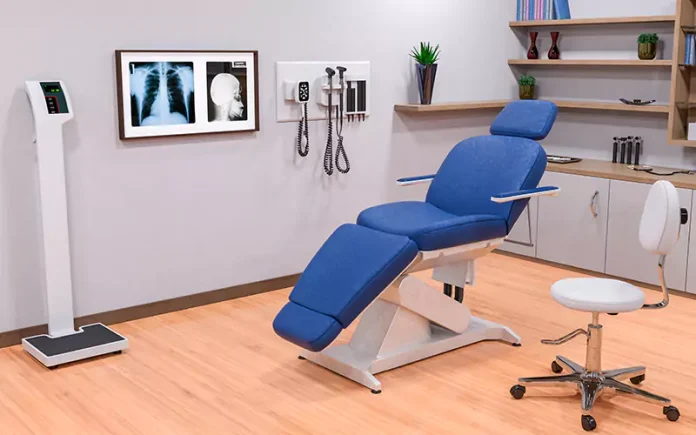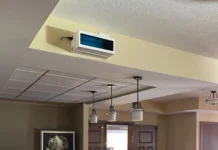Compiled by Castine Bernardy, Nicola Elardo and James P. Malley Jr., Ph.D., University of New Hampshire, Durham, New Hampshire
Editor’s Note: Owners and operators of UV technology are an important stakeholder group; these professionals have limited time and often prefer to remain anonymous when providing feedback. As a result, UV Solutions now builds this column from responses to a Qualtrics survey sent out each quarter with the help of UNH graduate students.
This month, the Qualtrics survey did not produce significant response. Therefore, during the past two weeks, facilities that had added UV to treat air or surfaces in response to the COVID-19 pandemic (January 2020 to present day) were identified from our files and called. The number of users willing to provide information was sufficient and included four restaurants, three doctors’ offices, two dentists’ offices and four K-12 school systems.
Indicate the specific reasons UV disinfection was added to your facility.
All responses indicated a pressing need to return to work and to serve their patients, clients and school children.
Half of the responses indicated that the addition was to try and give the public peace of mind that the environment was safe within their school or business.
One respondent from a school district indicated a desire to use UV on the district’s air for years and would now be looking forward to seeing if using it would reduce the number of staff sick days each year, even after COVID-19 was gone.
Describe the type of UV system installed for your facility.
Responses to this question were not completely clear, but it was easy to follow-up and clarify. As a result, it was clear that UV was added recently to the HVAC system within the duct work at six of the facilities. Four of the facilities installed upper room UV air type devices in areas with the most public traffic. One facility was using a mobile surface disinfection system to dose patient exam rooms after each use. One of the larger school systems indicated UV in the HVAC system as mentioned above and a night-time janitorial routine of treating the frequently used areas with a mobile UV source that was pushed around by the cleaning crew.
Indicate the status of your UV system and current COVID-19 response.
The respondents with systems that had employed UV within the HVAC systems indicated that they were in continuous use. One of those system users candidly indicated, “We assume it is working fine but do not normally check on it.”
Four facilities indicated that they follow CDC protocols and, as they stopped using masks and social distancing, they turn off their UV devices to save energy and costs. One facility indicated it had used the UV devices in its main rooms on and off, depending upon how the COVID-19 counts for the facility’s town and state were going. One facility indicated the lamps burned out and it no longer uses the UV device but kept it in case it is needed again.
How long has the facility been using UV disinfection,
and are you using any other devices to combat COVID-19?
The average length of use was 15 months, with the longest user reporting 27 months and the shortest user reporting six months. Five respondents indicated UV was added to their overall cleaning program, which included things like using more bleach, providing surface wipes and hand sanitizer stations, and always requiring masks.
Two facilities indicated they are changing their air filters more often, in addition to using UV equipment, but it was unclear what specifications – if any – were used for selecting these filters.
A dental office indicated it had installed ASHRAE-tested HEPA filters, upper room UV devices and a large-room air ionizer for the patient waiting area.
List any pros and cons you have found from using the UV device.
The respondents listed the following pros:
- They do not take up much space.
- We like that they are quiet.
- Were easy to install, just turn on and then use.
- Our customers liked reading that we use them and would tell us.
- Turned it on and left it alone, and we see no costs from running it.
The respondents listed the following cons:
- No idea if they work or not.
- They became big dust and dirt collectors in our dining room.
- Lamps burned out a lot faster than most of our other lights.
- Had all kinds of problems with the ballasts not working, and one started to smoke.
- Could not get the ones we wanted and had to settle for more expensive options.
Do you have a suggestion for businesses that are thinking of putting in UV devices?
The four larger systems all responded that it is important to find installers who have experience and know which equipment is best for your needs. One respondent indicated that it all seemed like a waste of time and money since so many of the respondent’s customers still were testing positive for COVID-19, and business did not pick up no matter what steps were taken.
In one way or another, all the restaurants recommended to other businesses that they should display on their signs, on their tables and on their menus that they were using state-of-the-art UV light to clean the air and the tables.
One school and one medical office indicated businesses considering UV devices should look for ones that have some way to measure and report (for example, with an alarm or a text message) if they foul or if the lamps go out.
Do you have any suggestions for makers of UV devices for how to improve them?
Three of the larger systems indicated it would help if health departments were more educated about the benefits of UV devices so they could get approvals to use them to take to their school boards.
Seven respondents, in one way or another, indicated that they wanted some way of knowing if the UV device was working properly. Some mentioned lamps not on; others mentioned UV devices getting dusty or greasy, and then were hard to reach and clean.
Two medical offices suggested that the devices were so small it was just not logical that they were doing enough room air to be effective. They suggested UV makers should provide a guide for where their devices work best or how much risk reduction or virus inactivation is expected.
One dental office suggested that UV makers look for ways to lower costs, make their systems more sustainable and get rid of the mercury hazard that the lamps may cause.
The top three most detailed responses, which came from medical and dental facilities, suggested that UV makers investigate ways to treat surfaces better and provide better operating ideas on how to get at parts of the rooms that are hard to reach.
One school maintenance supervisor asked if device makers are looking at other color lights besides UV since he had been reading that they would entail less risk and work longer.
Contacts: Castine A Bernardy, PhD Student, Civil and Environmental Engineering, University of New Hampshire, castine.bernardy@unh.edu; Nicola M. Elardo, Environmental Engineer, Weston and Sampson, Inc., elardon@wseinc.com, and James P. Malley, Jr, Ph.D., Editor-in-Chief, UV Solutions and Professor of Civil and Environmental Engineering, Department of Civil and Environmental Engineering, jim.malley@unh.edu






